
Siphonostomatoida is an order of copepods, containing around 75% of all the copepods that parasitise fishes. Their success has been linked to their possession of siphon-like mandibles and of a "frontal filament" to aid attachment to their hosts. Most are marine, but a few live in fresh water. There are 40 recognised families:
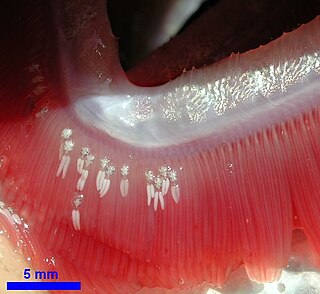
Ergasilidae is a widespread family of copepods and comprises many species. The type genus is Ergasilus. With a few doubtful exceptions all ergasilids are parasitic on fishes.

Ergasilus is a genus of copepod crustaceans occurring in both the ocean and fresh water, often called gill lice. The females are parasitic upon the gills of fishes. Being copepods, gill lice have a single median eye on their head. The second antennae are modified into prehensile pincers. Male gill lice are free-living.
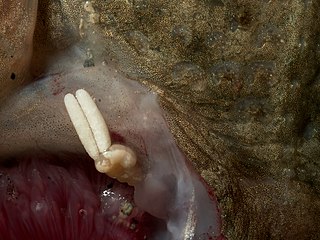
Chondracanthidae is a family of parasitic copepods, usually found infecting the branchial chamber of demersal fishes. It comprises the following genera:
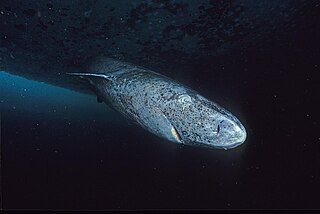
Ommatokoita is a monotypic genus of copepods, the sole species being Ommatokoita elongata. However, a specimen has been found on the skin of Etmopterus princeps, which has been assigned to the genus but not the species.
Centropagidae is a family of copepods in the order Calanoida. Its members are particularly known as plankton in coastal waters and in fresh water in Australia and southern South America. They are also found on subantarctic islands and in lakes in Antarctica.
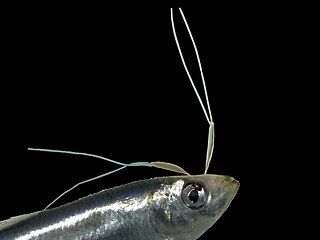
Pennellidae is a family of parasitic copepods. When anchored on a host, they have a portion of the body on the outside of the host, whereas the remaining anterior part of the parasite is hidden inside tissues of the host.

Caligus is a genus of sea lice in the family Caligidae. The species are parasites of marine fishes and could be vectors of viruses. As of 2017, the World Register of Marine Species includes the following species:
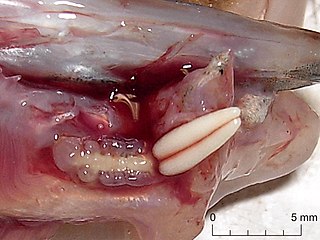
Acanthochondria limandae is a species of copepods in the genus Acanthochondria. They are host-specific ectoparasites of two species of flatfish: the common dab and the European flounder. They attach themselves to the bases of the gill arches of their hosts. They can infest as much as 2 to 30% of fish in a given population.
Chondracanthus is a parasitic copepod genus in the family Chondracanthidae, containing the following species:

Acanthochondria is a genus of copepods, containing the following species:

Lepeophtheirus is a genus of sea louse. The best-known species is L. salmonis, the salmon louse. Other species include L. pectoralis, which uses flatfish as its host, particularly the European flounder, and is also the type species of the genus Lepeophtheirus.

Eudactylina is a genus of copepods. They parasitise elasmobranch fishes.
Peniculisa is a genus of marine parasitic copepods in the family Pennellidae.
Cardiodectes is a genus of copepods in the family Pennellidae. Species are parasites of fish.

Peniculus is a genus of marine copepods in the family Pennellidae. They occur worldwide and typically parasitize coastal or epipelagic fish, with the exception of Peniculus hokutoae that was found parasitizing a mesopelagic myctophid, Symbolophorus evermanni.
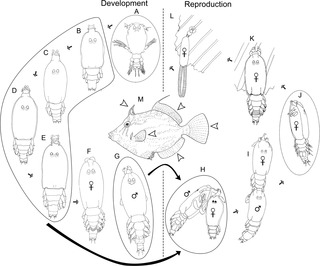
Peniculus minuticaudae is a species of parasitic pennellid copepod. It is known from the northeast Pacific Ocean. It was originally described in 1956, redescribed in 2012, and its complete life cycle has been elucidated on the cultured threadsail filefish, Stephanolepis cirrhifer in 2013.
Lernaeidae is a family of copepods belonging to the order Cyclopoida.
Hatschekiidae is a family of copepods belonging to the order Siphonostomatoida.











